PURPOSE The purpose of this study was to identify the scoring patterns of male and female Korean judo athletes by weight class, based on major international competitions from 2016 to 2021. METHODS We analyzed 1,508 scoring techniques, consisting of penalty, Waza-ari, and Ippon connected techniques, from male and female Korean athletes who participated in the Grand Prix, Grand Slam, Masters, World Championships, and Olympics. Chi-squared tests were conducted to examine differences in rounds, time, results, techniques, and continent by weight class. RESULTS In terms of differences in rounds, statistically significant differences were found in the men's lightweight and women's heavyweight categories. Statistically significant differences were found in the following: regarding differences in match time, in the men's heavyweight category; regarding match results, in the men's heavyweight category; and regarding differences in technique type, in the men's middleweight and heavyweight categories and in the women's lightweight and heavyweight categories. Finally, in terms of opponent continents, significant differences were found in both men's and women's lightweight categories. CONCLUSIONS In conclusion, this study confirmed the differences in wins and losses of male and female Korean athletes according to their weight classes. Based on this, it is necessary to analyze and systematize the technology types of the world's top athletes, including Korean athletes, to improve their judo performance.
PURPOSE This study aimed to compare and analyze the game content of the “3-rounds, 2-win system” matches before and after the rule revision implemented in 2022. METHODS This study covered 72 matches from the 2019 Rome World Championships Grand Prix, 92 matches from the Sofia World Championship Grand Prix, and 173 matches from the 2022 Rome World Championships Grand Prix. In total, 337 game videos were analyzed to assess the players‘ game content before and after the rule revision. RESULTS Analyzing the basic skills before and after the revision shows that the frequency of round kicks and pushes was high. Notably, while the frequency of round kicks, which are primarily used by players, decreased after the revision, the scoring success rate increased. CONCLUSIONS Based on the research findings, it is believed that post-revision, players are focusing more on game management aimed at scoring rather than attempting preliminary movements or connecting kicks to deceive their opponents.

This study has analyzed 33 domestic games and 26 overseas games by targeting women curling teams of home and abroad, and looked into what main performance variables are, how level differences of domestic team appear, and from which variables differences between winning team and defeated team come out in overseas teams. Also, main strategies has been suggested that are used most commonly for kick-off offense and latter offense, blank strategy in order to prepare countermeasures, and digital media DB has been constructed that can utilize proper countermeasures easily and simply, and a model has been proposed for predicting victory/defeat. To accomplish such goal, a variance analysis has been carried out by dividing domestic teams into each level after calculating frequency and ratio with SPSS18.0, and t-test analysis has been carried out by overseas teams. Also, the accuracy of victory/defeat classifications has been suggested by using an artificial neural networks method. As a result, a lot of technical proficiency differences have appeared among Class A(upper rank), Class B(middle rank), and Class C(lower rank) in domestic teams. The ‘Guard’ which is an aggressive variable has turned out to be used more in upper and middle teams than in lower team, and the ‘Tab Back’ has been used more in upper rank than in lower rank. Furthermore, regarding the average comparison on victory/defeat in international games, victory teams have more significant difference(p<.05) than defeated teams in accuracy of shot techniques and strategy accomplishing abilities, and victory teams have been turned out to use less ‘Drew’ and more ‘Take’ than defeated teams significantly in Drew and Take’ technique variable. Finally, the accuracy of a prediction model has been 91.7% for learning and 92.9% for the test result to predict the victory/defeat in international games through the artificial neutral network analysis. The prediction accuracy of domestic games was 81.0% for learning and 71.4% for the test.


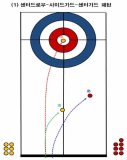

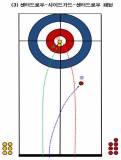
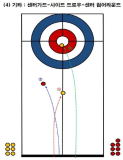

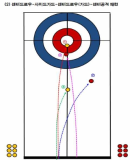

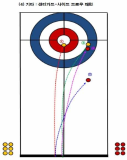
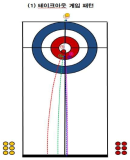


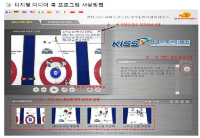

Purpose The purpose of this study is to analyze the changes in the game factors since the introduction of the VAR system and discuss the meaning of the changes in the K-League. Methods The game factors related to referee decisions (goal, penalty kick, offside, foul, yellow card, red card, additional time) were divided into home and away team and analyzed by two-way ANOVA for 556 games before and 583 games after the VAR system was implemented. All game factors that occurred during the match and additional time were analyzed as independent t-test before and after the implementation of the VAR system. Results First, there was no statistically significant difference between a goal and a penalty kick. Second, the offside was significantly reduced throughout the home team, away team and the entire game(p<.001). Third, fouls were significantly reduced in home teams, away teams and the entire game (p<.01). Fourth, yellow cards were significantly reduced in both home and away teams and the entire game(p<.001). The red card increased significantly throughout the home team, away team, and the entire game(p<.001). Sixth, the additional time showed no difference the first half and the entire game, and was a little reduced in the second half (p<.05). Conclusions As a result of this study, players should not anticipate offside decision and stop playing in critical situations that may lead to a score or penalty kick, and continue playing until the referee makes a final decision. In addition, all red card situations are review through the VAR system, so excessive foul play or unnecessary behavior should be avoided. K-League referees are required to make a more accurate decision in the red card situation, and the time wasted by the VAR system during the game is not much.

Purpose The purpose of this study is to investigate the characteristics of the winners and the losers of curling games to provide the winner strategies for the curling stakeholder. Methods For this study, data was collected from 2014 Sochi Winter Olympics web-site(http://sochi2014.curlingevents.com), which covers 199 games in total. Using the collected data, we extracted additional data such as the shot types and accuracy per players, team average score per end, whether or not with hammer per end and so on. and then a Chi-square test in statistic package SPSS 23.0 was used. The statistical significance was considered with p< 0.05. Results As a result, it was found that there were statistically significant difference between winners and losers of curling game on the shot type and accuracy(Draw, Front and Clearing). It was also found that there was not statistically significant between winners and losers about the number of blank end per end. It was found that 9th end average score was relatively lower than the other end in both the winners and the losers. It was found that the characteristics of the winners tends to be successful in more point from 5th end to 8th end with hammer and steal without hammer. Conclusion In conclusion, the strategies to win the curling game is to improve the shot performance of Lead and Skip, to organize the operation sequence for the successful blank end, and to develop the database and software in curling.


PURPOSE This study aimed to analyze the difference between scores and loss of world-class fencing sabre players. METHODS A total of 78 match videos and 1969 points of international competition over 3 years were analyzed for the nine major competitors of the national fencing team (Males = 5, Females = 4). The characteristics of each skill, body section and location according to the score were analyzed by dividing them into male and female groups. Data were analyzed using IBM SPSS ver. 25.0. RESULTS First, in the situation analysis according to the men's sabre score, attack skills were the most common in the winning situation (447 points, 73%) and in the situation of losing points (389 points, 72%); however, the difference was not significant. In the analysis of the piste location according to the score, B4 was the most common appearing 254 times (41.5%) in the scoring situation and A4, 243 (45%) times in the losing situation, with a significant difference (p < 0.001). Second, in the situation analysis according to the women’s sabre score, 315 attacks (70.6%) were found in the winning situation and 277 (74.7%) in the losing situation; however, the difference was not significant. In the analysis of the scoring body part, the Sixte area scored the highest with 121 points (27.1%), and the arm area lost the most points with 105 points (28.3%); however, the difference was not significant. In the analysis of the piste location according to the score, A4 was the most common in, appearing 179 times (40.1%) in the scoring situation, and 182 times (48.8%) in the losing situation, with no significant difference at the p < 0.001 level. CONCLUSIONS In the men's game, there were many scored points in B4 and many lost points in A4. In the women's game, there were many scored points and lost points in A4; therefore, the difference in goals and losses according to the piste position was confirmed. These results suggest that it is possible to infer the game management patterns of world sabre players and the flow of world fencing.
When the long-awaited KSME in PESS was established in 1998, KSME faced a turning point in its growth. Following the changes in both quality and quantity of the society's researches since its establishment and seeking for future themes is important for the society. This research analyzed the society's research trend using mainly the Korean Journal of ME in PESS. Then, by examining the physical fitness test, it proposed possible future themes for the KSME. This research also looked into the American Kinesmetrics’ contribution to Kinesiology, its research trend and future researches The KSME's recent researches show refined quality, diversified themes and reinforcements in practical researches. Regarding the themes, the reliability and validity of tests became predominant, sports analysis and physical activity emerged, and interest in measurement and evaluation in school PE was low. Possible research themes in the future are measurement and evaluation in school PE, game analysis and sport big data. The recent interest of the American Kinesmetrics was the cross validation of criterion-referenced physical fitness cut-off score, the validation of the guideline for physical activity, and the relationship between sedentary behavior and health. Possible future research themes of the American Kinesmetrics were the refinement of test methods, the effectiveness of the physical fitness test award system, and the application of the ubiquitous wearable technology.

Purpose Based on the match data of major judo world competitions in the last five years, this study identifies differences in general characteristics and environmental factors according to scoring technique and scoring times. And by exploring the factors associated with scoring technique, I would like to present a practical strategy that can be used to establish guided tactics. Methods 50,828 points were used for analysis of the entire men and women who competed from 2016 to 2020. Differences in the characteristics of the world's leading athletes according to their types of technique were used in conjunction with the chi-square test and the one-way ANOVA with Sceffe test to produce results. Results The results of this study showed that the type of skill by foot technique was the most common, and the ratio of hand skill to female player to push and foot skill was relatively high. The higher the weight class, the lower the ratio of hand technique, the higher the press rate, and the frequency of skill types also increased. At the Olympic Games, the ratio of hardening technique was higher than that of other competitions, and as the year progressed, the ratio of hand and waist technique increased, and the number of mat-hold decreased. The ratio of hardening technology was relatively high, and the ratio of hand-to-foot technology was relatively high as the semi-final and final rounds were higher. As for technical time, the male athlete's skill time appeared to be about 12 seconds longer on average, with the lowest in the heavyweight class and the longest in the lightweight class. Athletes from the Asian continent appeared to have the longest technical time, which is believed to have resulted from the characteristics of excellent physical strength, good endurance, and strong hardening technique. The skill time leading to the score by pressing and hand skill was the longest, and the waist skill and grip skill time were relatively short. Half of them appeared about 5 seconds shorter on average compared to the first round, and the more important the game (the 4th round, semi-final, and final) the longer the skill time. Conclusion In conclusion, through this study, the characteristics of the world judo players' skill types and time were confirmed, and based on this, it is necessary to analyze and systematize the technical types of the world's best athletes, including Korean athletes, in order to improve their judo performance.



Purpose The purpose of this study was to compare the official world records of UIPM in the last 3 years to find out the relationship between the score characteristics of fencing, swimming, equestrian, and laser-run events in the final rankings and to analyze the relative importance of each event. Methods For 3 years, from 2017 to 2019, a total of the data were collected, the final rankings, fencing conversion scores, swimming conversion scores, equestrian scores, and laser-run conversion scores for all male and female athletes who participated in the UIPM Level 1 World Cup and World Championships(1,197 finals and 2,173 qualifiers). The Multiple regression analysis was used to establish the relationship between the response(subjective) variable and the conversion score of the four explanatory(independent) variables. Results The results were compared by qualification (n = 2173) and final (n = 1197) by dividing into male (n = 1179) and female (n = 1591), and the fencing score was qualifications (male β= -.691, female β= -.533) and the finals (male β= -.632, female β= -.632), it showed the greatest influence in all. On the other hand, the swim score showed the lowest impact on both qualifications (male β=-. 021, female β=-.196) and finals (male β=-. 087, female β=-. 207). The fencing event plays a major role in passing the qualifiers and is a big variable for good performance in the finals. On the other hand, in the case of swimming scores, both men and women had the lowest impact on the final ranking, and there is a limit to the final performance of swimming scores in both qualifiers. Conclusion In conclusion, it is necessary to analyze and systemize the fencing skills of the world’s best athletes, including Korean athletes, to improve the Korean fencing athletes' performance, and through such scientific analysis, a system that enables fast and flexible responses to the upcoming Olympic. Additionally, even though the importance of all sports should be levelled due to the characteristics of modern pentathlon, relative importance is biased toward fencing and swimming events are neglected. Therefore, it is deemed necessary to conduct a follow-up study on whether the scoring system in modern pentathlon consists of a scoring system that supports the records of each event and the upper and lower scoring system.





The aim of this study was to evaluate gender differences of expert and non-expert in match playing time, moving distance, energy consumption and heart rate (average, maximal) during 16 simulated badminton matches in male (n = 16) and female (n = 16) national elite players. The players had perform three sets on same day, and this time observed the playing time, moving distance, energy consumption and heart rate (resting, average, maximal) level during badminton match. Analyses of variance with repeated measures were used to test any significant time×group interaction effects on the measured variables. Statistical significances were tested at p = 0.05 with spss-pc (version 18.0). As a result, male's player had significantly difference between expert and non-expert in moving distance (p=.012), energy consumption (p=.003), average heart rate (p=.002) and maximum heart rate (p=.002). Female's players showed significant difference between expert and non-expert in moving distance (p=.001) and energy consumption (p=.012). In conclusion, there seemed to be an increased playing intensity (i.e., moving distance, energy consumption, average heart rate and maximum heart rate) from expert than non-expert in gender differences. These results suggest that men male's players with expert performed the game at a higher intensity than compared to non-expert, on the other hand female's player with non-expert showed that more activity and energy consumption was unclear during the game